Fleas and ticks are common external parasites in dogs. Fleas are small, wingless insects that feed on the blood of their host. Ticks, on the other hand, are mites that attach themselves to the skin of their host and also feed on its blood. They can remain attached for long periods of time, feeding on blood and increasing in size.
As an owner, it is essential to understand the risks associated with these parasites and to implement effective prevention measures to protect your pet's health. In this article, Lore & Science tells you all about the risks, signs and natural treatments for ticks and fleas in dogs.
Why is it important to protect your dog against fleas and ticks?
Protecting your dog from fleas and ticks is essential for several crucial reasons. First, these parasites can cause your pet great discomfort by causing intense itching and skin irritation. Fleas can quickly infest your dog's coat and multiply rapidly, which can lead to widespread infestation and deteriorating health. In addition, flea bites can trigger allergic reactions in some dogs, leading to further itching and discomfort.
As far as ticks are concerned, they represent a major health risk for our companions. They are vectors of serious diseases such as Lyme disease, piroplasmosis, ehrlichiosis, babesiosis and many others. These diseases can cause serious symptoms such as fever, joint pain, gastrointestinal problems and even heart disease.
In some cases, they can even be fatal if not detected and treated quickly. In addition, some diseases transmitted by fleas and ticks are also dangerous for humans. It is therefore crucial to protect your dog from these parasites in order to prevent their spread to you and your family.
Detecting the presence of fleas in dogs
As mentioned above, fleas are hematophagous parasites. This means that they feed on the animal's blood by biting it. They lay their eggs in the coat and the eggs fall to the ground. This mode of reproduction often leads to a rapid infestation of the animal and its living environment.
Therefore, detecting the presence of fleas in your dog is a crucial step in preventing an infestation and protecting the health of your four-legged friend. One of the most obvious signs of fleas is your dog's frequent and incessant scratching. Fleas can cause intense itching and skin irritation, leading to excessive scratching, licking or chewing.
By carefully inspecting your dog's coat, you can also spot the fleas themselves or their droppings, which look like small black particles. If you crush these particles and see a red streak, it is flea feces.
Another method is to use a specially designed flea comb, carefully going through your dog's coat to catch and remove fleas. If you notice fleas or have any doubts, it is essential to take immediate action to treat your dog and eliminate these parasites.

Identifying ticks in dogs
As mentioned, ticks are small mites that also feed on the blood of their host, which can cause various health problems. To spot ticks, it is important to perform a thorough inspection of your dog's coat, paying special attention to sensitive areas such as the ears, neck, armpits and legs. Ticks usually attach themselves firmly to the animal's skin and may look like small black or brown bumps.
It is recommended to use special tick forceps to remove them properly, making sure to grasp the tick as close to the skin as possible to avoid leaving the head or mouth parts embedded in the skin. It is important to inspect your dog regularly, especially after outdoor walks in wooded or grassy areas where ticks are common.
When your dog is infested with ticks, he or she may show certain symptoms that indicate their presence. First, you may notice excessive itching and skin irritation in the areas where the ticks have attached themselves. Your dog may also lick or scratch frequently.
In addition, the presence of ticks can cause local redness and inflammation. Some ticks can also transmit dangerous diseases, such as Lyme disease, babesiosis or piroplasmosis. Symptoms of these diseases can vary, but may include fever, fatigue, joint pain, gastrointestinal upset and loss of appetite. If you notice these symptoms in your dog and know that he has been exposed to ticks, it is essential to consult your veterinarian for an accurate diagnosis and appropriate treatment.
How to protect your dog naturally against fleas & ticks ?
Fortunately, it is possible to protect your dog from fleas and ticks. In fact, there are even natural methods that are very effective. In fact, certain plants and essential oils have been clinically proven to act as natural repellents. There are two ways to protect your dog or puppy against fleas and ticks: by applying a repellent to the skin or by giving him food supplements for long-lasting protection.
Preventing fleas and ticks in dogs
Preventing fleas and ticks in dogs is essential to their well-being and health. First, it is important to maintain a clean environment by regularly vacuuming your dog's carpets, cushions and sleeping areas to remove flea eggs and larvae. It's also a good idea to keep outdoor areas where your dog regularly walks clear of tall grass and bushes where ticks can hide. In addition, good hygiene and regular grooming of your dog, including brushing, careful skin inspection and prompt removal of detected ticks, can help prevent infestation.
Finally, throughout the year, it is possible to protect your dog from fleas and ticks by adding a food supplement specially formulated for our canine companions. NiTick'NiPuce tablets contain active ingredients based on plants, with repulsive effects against fleas and ticks and other parasites. Its action at the level of the skin of the animal comes to protect it all the year against the bites and the infestations. It naturally repels fleas and ticks, and even removes installed ticks.
Protect your dog from fleas and ticks
To complete these preventive measures during outdoor walks with your dog, you can protect him from fleas and ticks. For this, there are effective solutions such as NiTick'NiPuce Spray, a 100% natural repellent specially designed to repel these unwanted parasites. Thanks to its high-performance formulation, easily applied to the dog's hair, this spray allows the repellent agents to soak into the hair, thus ensuring maximum and long-lasting protection. By using this product, you can be assured that your dog is effectively protected against fleas and ticks when you are out and about, offering peace of mind for both you and your faithful companion.
In conclusion, it is essential to take adequate preventive measures to protect your dog against fleas and ticks. These parasites can cause significant health problems for our four-legged friends. By using quality and natural repellents, you can ensure the well-being and health of your dog.
In addition, it is also recommended that you maintain strict hygiene, check regularly for parasites and consult a veterinarian for personalized advice. By being proactive, you can give your dog a healthy, happy life free of the discomfort that fleas and ticks can cause.
Share your experiences or questions with us in the comments ↓

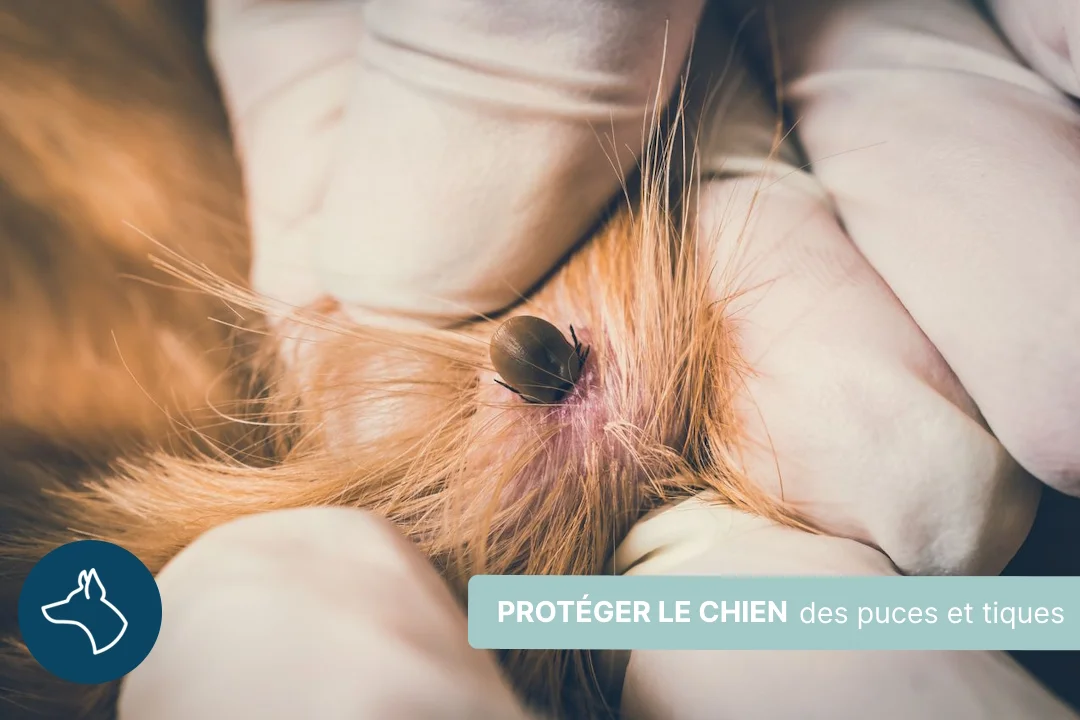
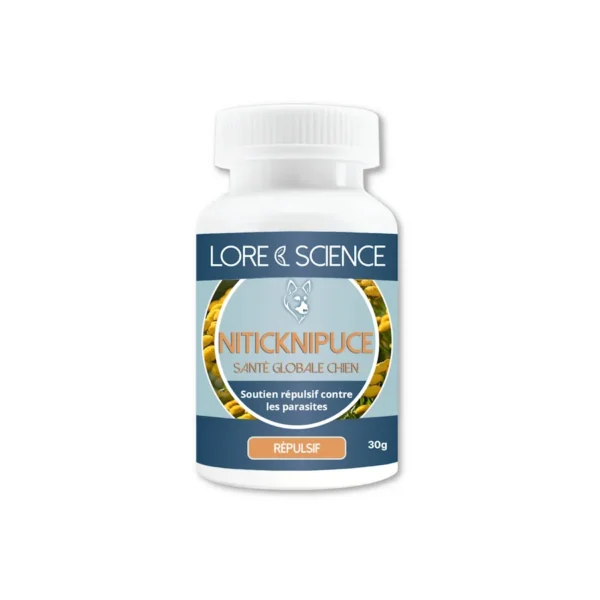
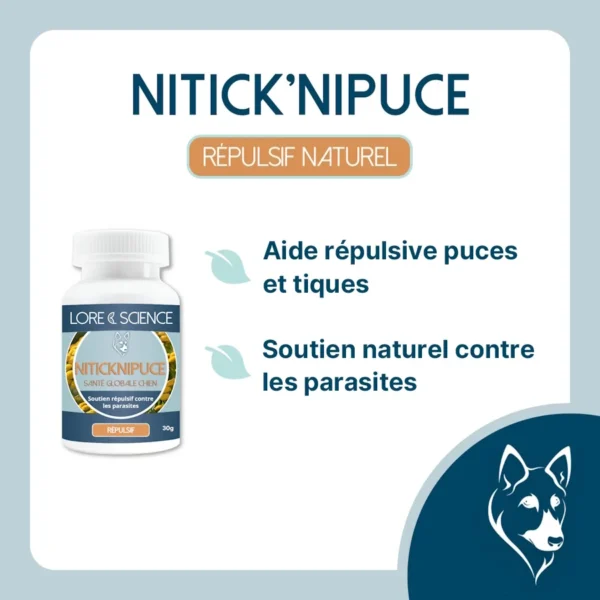
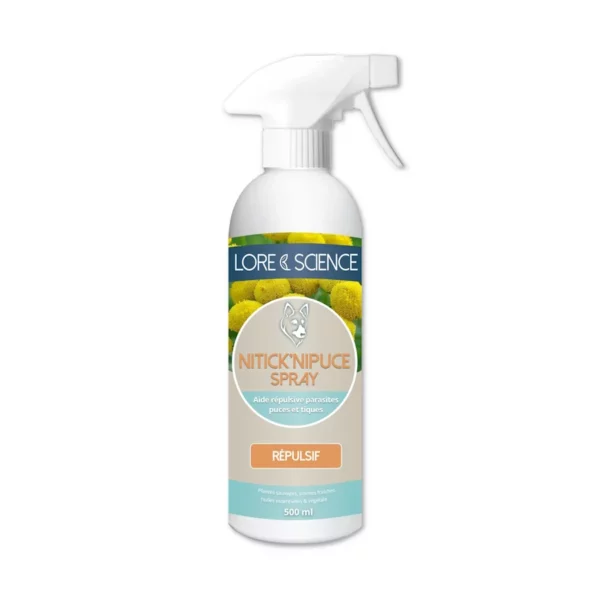
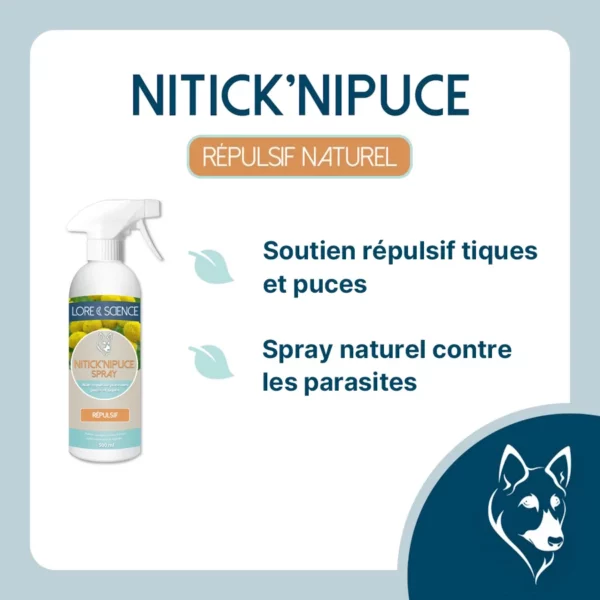

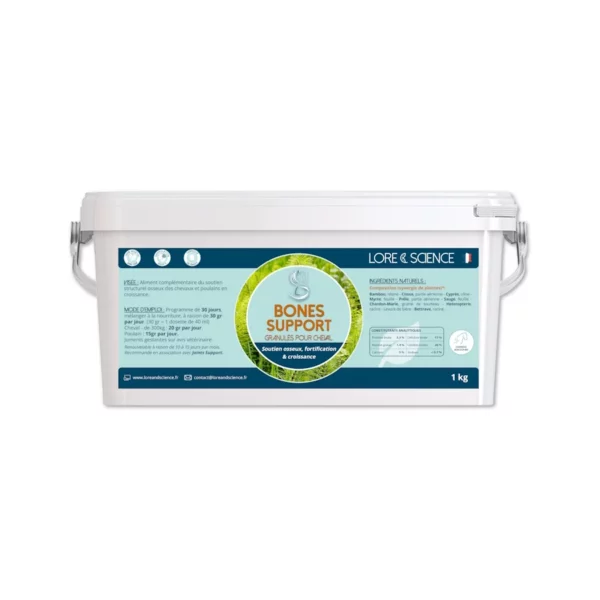

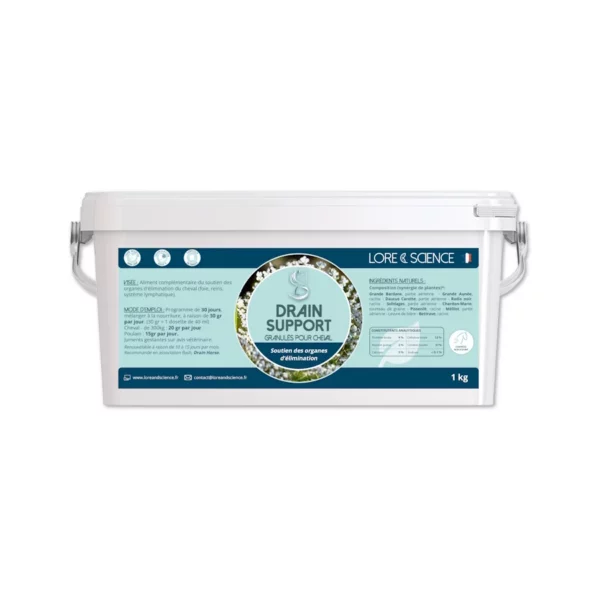
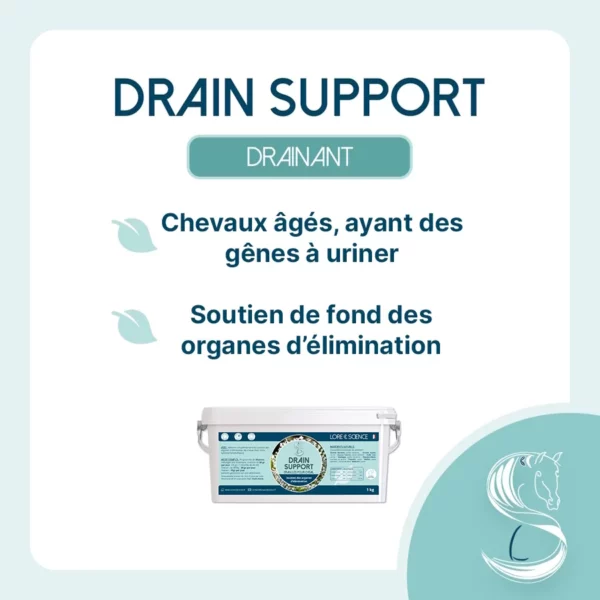








One response to "How to protect your dog from fleas and ticks?"
My dog, Sirius, 3 years old, has just contracted Piroplasmosis, which is a real scourge.
Sirius is a flat-coated retriever, quite energetic on walks, and a big eater...
One morning last week, he didn't finish his bowl, his nose was all hot and he had no energy. I went to the vet in a hurry, and after an analysis of his blood test, the vet detected piroplasmosis, with a low level of white blood cells and platelets. He gave him an antidote which worked very well. The very next day he was already much better and now he's cured.
The vet told me that if I'd waited any longer he would have died. He'd never seen as many cases of piroplasmosis as this year. It's really important to control the dog's coat and protect him from ticks. I'm going to try the NiTickNiPuce repellent that I ordered recently and haven't received yet.
Thanks
Olivier